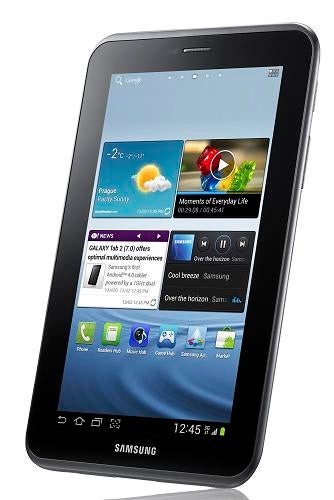Growing Tablet market means more choice but more confusion

Your support helps us to tell the story
From reproductive rights to climate change to Big Tech, The Independent is on the ground when the story is developing. Whether it's investigating the financials of Elon Musk's pro-Trump PAC or producing our latest documentary, 'The A Word', which shines a light on the American women fighting for reproductive rights, we know how important it is to parse out the facts from the messaging.
At such a critical moment in US history, we need reporters on the ground. Your donation allows us to keep sending journalists to speak to both sides of the story.
The Independent is trusted by Americans across the entire political spectrum. And unlike many other quality news outlets, we choose not to lock Americans out of our reporting and analysis with paywalls. We believe quality journalism should be available to everyone, paid for by those who can afford it.
Your support makes all the difference.This holiday season is turning into a battle among tech giants for the hand-held computer that every tech geek, executive, student and child will be carrying around next year.
Analysts expect tablets to be a top gift this year, as the appeal of the devices grows to a wider audience looking to move up from e-readers or down from laptops. It will probably be a make-or-break few months for new market entrants, including Best Buy, Barnes & Noble and Google, as consumers wade through the myriad choices.
When Apple first introduced the iPad in 2010, it wasn't clear whether tablets — occupying a strange space between the smartphone and the laptop — were here to stay. But now analysts predict sales of at least 117 million tablets by the end of the 2012, the majority of which are expected to occur during the final quarter of the year. Fifteen percent of tablet buyers told the Maritz Research firm that, if given the chance, they would purchase a tablet before buying a computer, smartphone or even a television, making it a potential all-in-one replacement device.
"People coming in at this point are a wide cross section of society. They held back initially to see if it was a fad but are now seeing these devices everywhere they go," said Rhoda Alexander, a tech analyst at IHS iSuppli.
The rising interest means there are tablets aimed at all segments of the market — from the business-like Microsoft Surface with a full keyboard on its cover to the Toys R Us Tabeo, meant for children as young as 5.
Apple added two tablets to its lineup last week — a revamped full iPad and a more portable iPad mini. Google announced two new tablets Monday, an updated version of its Nexus 7 and a larger, 10-inch tablet. Meanwhile, Amazon has expanded its line of low-cost Kindle Fires, and retailers Barnes & Noble and Best Buy now have their own offerings. That doesn't include companies such as Samsung, Asus, Lenovo — all of whom who are taking a second crack at the market.
This holiday season could establish a pecking order for the variety of tablets now cluttering the market as well as provide insight into what consumers value: price, functionality or app and entertainment options.
The $29 billion tablet market is attracting new competitors looking to offset flagging revenue in the personal computer industry, which is expected to shrink this year for the first time in a decade. Others see an opportunity to leverage the devices to reach consumers more directly.
"The value proposition for a retailer is to drive additional sales of their physical goods or to build brand recognition," Alexander said. For example, users who pick up a Barnes & Noble Nook are likely to turn to the bookstore chain when they want to get their hands on the next hot novel.
That strategy usually includes making little or no profit on the tablets upfront. Companies can always make money later, said Alexander, by introducing tablets with new features in the second generation — as Amazon has with its Kindle Fire line. The important thing is getting a foot in the door.
But so far, Alexander said, no one's managed to hit pay dirt with that business model.
Only Apple has shown it can make a profit in this increasingly competitive market. It prices its tablets at a premium and cashes in on the thousands of apps developed for them.
Yet the company reported that device profit margins on the iPad took a dive in the last quarter, raising some questions about whether the company can keep up its red-hot performance. The iPad currently has over 60 percent of the market, but that's down from 80 percent in 2010.
To get a new piece of the market, Apple introduced the smaller, more portable iPad mini but barely downsized its price. The 8-inch tablet's cheapest model is $329 while Google and Amazon are offering comparable tablets for $199.
Apple's pricing strategy has left the door open for others to grow, said Tom Mainelli, a tablet analyst for the research firm International Data Corp.
"A couple of years from now if Android and its variants . . . have a larger market share than they do today, we'll say this was the moment in time when Apple could have relegated them to niche status and opted not to," Mainelli said.
More tablet options may be good for consumers, but it will require them to do some research as well.
"There's going to be an awful lot of choices on the market — that's great for consumers but could be confusing," Mainelli said. His advice? Go into your nearest store and get a feel for your top choices.
"Even spending five or 10 minutes with a device will probably go a long way toward making an educated decision," he said.
Join our commenting forum
Join thought-provoking conversations, follow other Independent readers and see their replies
Comments